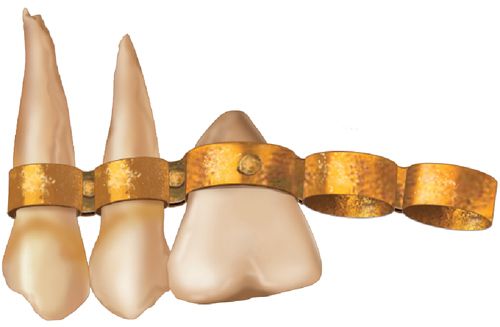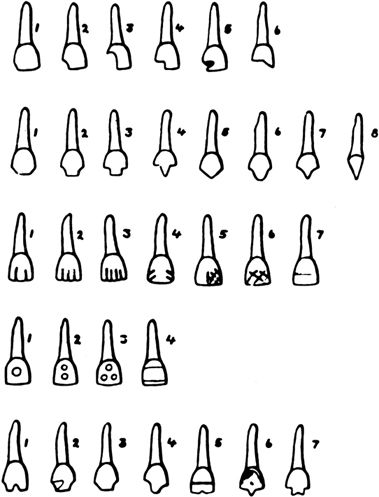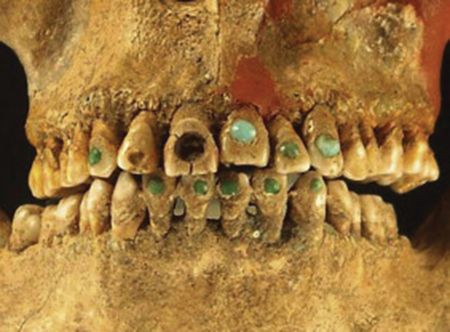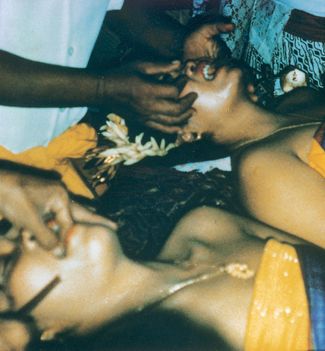Writing in the ninth century BC, the author of the Song of Solomon (4:2) offers a poetic description of dental esthetics:
“Thy teeth are like a flock of well-selected sheep, which are come up from the washing, all of which bear twins, and there is not one among them that is deprived of her young.”
Both the Phoenicians (approximately 800 BC) and Etruscans (approximately 900 BC) carefully carved animal tusks to simulate the shape, form, and hue of natural teeth for use as pontics (Fig. 1-1). The Central and South American Mayas (approximately 1000 AD) beautified themselves by filing the incisal edges of their anterior teeth into various shapes and designs (Figs. 1-2 and 1-3). They also placed plugs of iron pyrites, obsidian, and jade into the facial surfaces of the maxillary anterior teeth (Fig. 1-4). This practice was common among both sexes, and tooth mutilation is still practiced in some societies (Figs. 1-5 and 1-6).






During the Roman Empire dental cosmetic treatment was available only to the affluent classes. Oral hygiene was practiced primarily by women for reasons of beauty rather than dental health. Mouthwashes, dentifrices, and toothpicks were common in Roman boudoirs, and when teeth were lost, they were replaced with substitutes of bone or ivory carved to the likeness of the missing ones.
Stay updated, free dental videos. Join our Telegram channel

VIDEdental - Online dental courses


